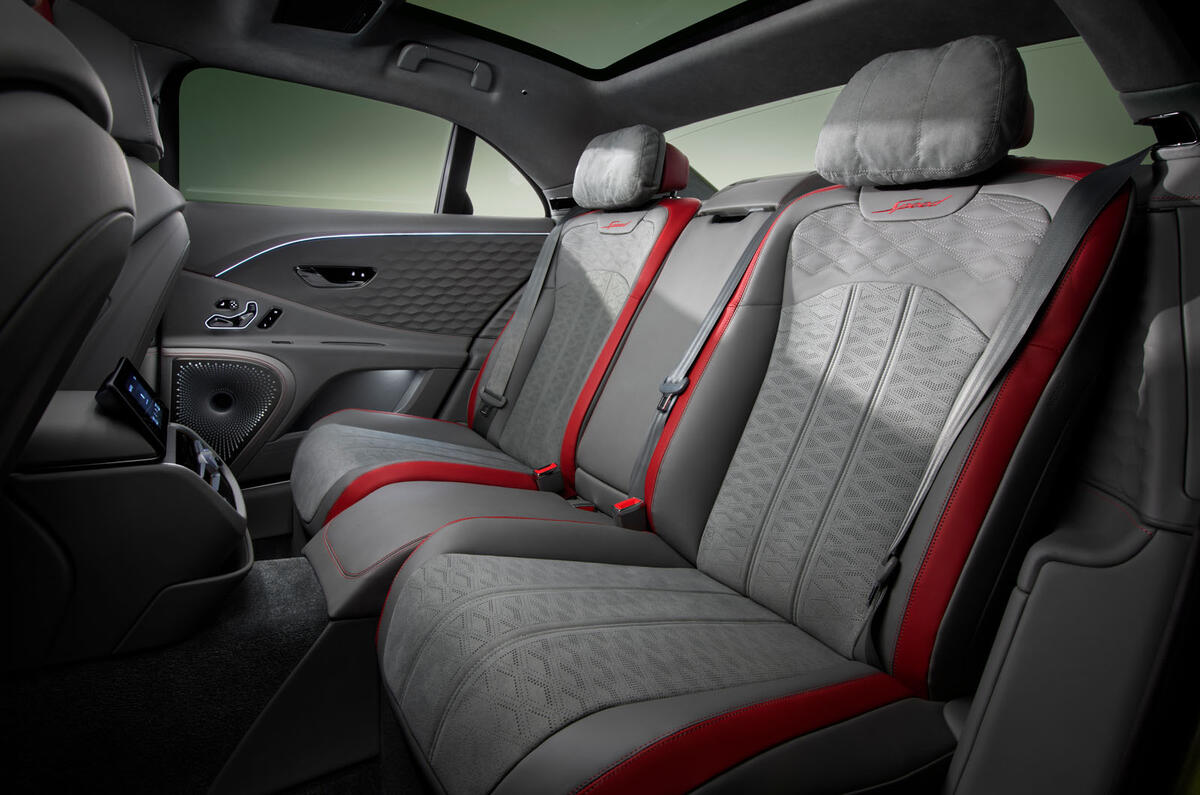The new Bentley Flying Spur has been unveiled, ditching the brand's legendary W12 engine for the same electrifed set-up as in the Continental GT.
Its plug-in hybrid powertrain pairs a 592bhp 4.0-litre twin-turbocharged V8 with a gearbox-mounted electric motor for a combined 738lb ft and 771bhp – 145bhp more than the discontinued W12. That makes it Bentley's most powerful four-door saloon yet.
Bentley has opted to use the electric motor instead of cylinder-deactivation technology, with the V8 switching off at low loads, such as coasting at A-road speeds. The Flying Spur can also run solely in electric mode at up to 87mph or three-quarters throttle and the 187bhp motor is claimed to have “more than enough to keep up with the traffic in most situations”.
It draws power from a 25.9kWh battery that yields a claimed maximum range of 47 miles. It can be recharged at speeds of up to 11kW via an AC charging cable or by the engine in Charge mode. Bentley says the car can achieve a total range of 515 miles with both the battery and petrol tank brimmed. The firm claims it’s the most efficient Bentley to date but has yet to disclose any economy figures. The previous W12 car achieved 22.6mpg.
Bentley has focused heavily on the revised car’s underpinnings, making it a more dynamic proposition than the one it replaces.
The brand says this is due to the new powertrain, which, although bringing a weight penalty of 209kg compared with the old W12 model, shifts the car’s weight distribution. Now 52% of the car’s mass is positioned over the rear axle, compared with 47% previously, aiding traction.

The car’s chassis has also been revised. New twin-valve dampers are said to improve bump absorption in Comfort mode while retaining the body control offered in Sport. The electronic stability control software has been updated to keep the car stable in a broader range of scenarios.
While the new Continental GT, refreshed in June, received a significant styling revamp – most notably new headlight designs similar to those of the highly exclusive Batur and Bacalar – the facelifted Flying Spur is virtually indistinguishable from the outgoing model.
Exterior visual changes come in the form of squared lower air dams and a redesigned ADAS sensor. The Speed models receive a bespoke grille, front bumper and rear splitter.
Inside, the optional Wellness Seating Specification, which actively adjusts an occupant’s posture, can now be had across all four seats, whereas it was previously reserved for the driver.
Deliveries of the new Flying Spur will start by the end of this year and prices are expected to start at around £220,000.


















Add your comment